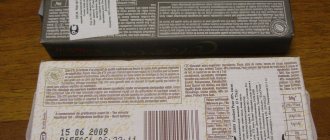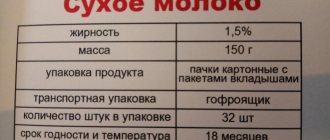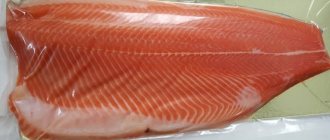Red caviar is a fairly expensive product that many can only afford for major celebrations. Therefore, you should approach its storage with extreme care , so as not to lose an expensive delicacy due to an absurd mistake. Usually caviar is consumed quickly, since it is packaged in small containers. But, if the product is purchased in reserve, it makes sense to take care of its safety.
What affects the shelf life of red caviar
The shelf life of salmon caviar directly depends on the following factors:
- quality of raw materials;
- conditions of warehouse and home storage;
- package.
The processing technique plays a significant role, but this point is more likely to relate to violations of production technology than to shelf life, although the consumer value of such products is noticeably reduced.
According to the current GOST rules, granular caviar is packaged in:
- glass jars with lithographed metal lids;
- metal cans.
The document does not say anything about other types of packaging, for example, plastic containers, so the product in such containers is either not related to natural granular caviar, or is sold in violation of GOST.
Important! Glass and metal containers are filled completely with caviar, leaving no free space. One jar can only contain caviar of the same type and the same production date.
Canning
Canning is one of the most popular options for storing various products, including red caviar. Glass jars are perfect for this. You should do the following:
- prepare the jars in advance (they need to be washed, doused with boiling water and the walls greased with vegetable oil);
- Pour water into the pan, put a piece of raw potato in it, and after boiling, start adding salt (after the potatoes float, the brine can be considered ready);
- transfer the caviar to a gauze bag and place it in cold brine for a couple of minutes;
- wait until the liquid has drained and start putting it into jars (you need to compact it tightly enough, but do not press);
- now, so that there is no air left in the caviar, fill it with vegetable oil and close the jar with a lid (nylon or seaming);
- In a cool place, caviar will last up to six months.
GOST requirements
Technical features relating to the production, packaging, acceptance and sampling of valuable fish caviar are regulated by two regulations:
- GOST 18173-2004 - canned granular salmon caviar;
- GOST R 55486-2013 - sturgeon caviar.
It contains mandatory requirements for the mass fraction of ingredients and the content of preservatives, but this information concerns mainly the manufacturers of the product. In terms of storage, the main provisions are noted here:
- caviar can be stored for 4 months without adding preservatives;
- The shelf life of products with added preservatives increases to 12 months.
In both cases, the recommended storage temperature varies within -4/-6 degrees, shelf life is determined from the moment the product is manufactured. In addition, paragraph 7.2.2 indicates that the shelf life is indicated by the manufacturer, but within generally accepted standards.
Download for viewing and printing:
GOST 18173-2004 “Granular salmon caviar in jars. Technical specifications"
GOST R 55486-2013 “Granular caviar of sturgeon fish. Technical specifications"
Basic rules for freezing
If you want caviar to have a pleasant taste even after long-term storage, you need to properly
freeze.
There are several features
:
- If it is necessary to freeze a large amount of caviar, it must be divided into several small portions and placed in containers;
- It is not recommended to repeat this procedure several times, as the delicacy will suddenly begin to lose its original appearance;
- It is advisable to use glass jars or food containers to store caviar;
- The product can be frozen for no more than one year, so the date it was placed in the freezer should be indicated;
- If it is necessary to store caviar for more than 12 months, then an antiseptic is added to the container in which the product is located; it can be sorbic acid
; - You can add a small amount of glycine to the container, it will prevent the eggs from sticking together.
You need to pay close attention to each point of the freezing rule; only in this case can you preserve the freshness of the delicacy for several months
.
Signs of quality products
If caviar is sold in metal cans, the consumer is not able to determine the quality of the product by appearance. Here you will have to focus on the markings, which indicate the date of manufacture. In addition, it is recommended to pay attention to the integrity of the container : granular caviar is stored only in sealed packaging, so damage to the jar or swelling of the lid clearly indicates a product that is unfit for consumption.
When choosing products in glass jars, you need to pay attention to external signs. GOST directly states that the eggs must be whole and have a uniform, uniform color. The presence of blood clots or film in the mass indicates poor quality products.
Important! Uneven color is allowed for coho and sockeye salmon caviar.
Marking
According to GOST 18173-2004 “Granular salmon caviar in jars. Technical specifications”, as well as GOST 11771-93 “Canned food and preserves from fish and seafood. Packaging and labeling” on containers with red or black caviar must indicate:
- shift number;
- date, month and year of production.
In addition, the label must contain information about the time during which the product is suitable for consumption, as well as the type of fish used to prepare the product.
Storage recommendations
Regardless of the storage option - warehouse or home - when choosing a temperature regime, you must be guided by GOST.
It is stated here that the permissible storage temperature for granular caviar is −4/-6 degrees. Consequently, at home, caviar is stored only in refrigerators. By following these requirements, caviar can be preserved for up to 1 year, depending on the variety and method of preparation. Of course, the packaging remains intact and sealed. Sometimes situations arise when a jar of caviar is opened, but the product is not completely consumed.
In this case, you need to remember:
- at room temperature, caviar is not stored for more than 4-5 hours;
- It is allowed to keep an open jar in the refrigerator for no more than 7 days.
Important! When storing caviar in a closed container, sudden temperature changes should be avoided: this impairs the taste and shortens the shelf life.
Temperature
At what temperature should caviar be stored? Caviar can only be stored at low temperatures, that is, exclusively in the refrigerator. According to GOSTs, both types of caviar should be stored at a temperature from –2 to –6°C.
These indicators should be taken into account when storing the product at home. Another condition is that the temperature must be constant .
Transitions through the zero mark are especially dangerous for caviar, when the caviar is either frozen or thawed.
How to return expired caviar to the store
The Consumer Rights Protection Law gives you the right to refuse a product of inadequate quality, demand a replacement product or a refund. Here you can refer to the articles:
- Article 18 - the rights of buyers when identifying defects in the purchased product;
- Article 19 - deadlines for filing claims;
- Article 21 - replacement of defective goods.
The absence of a receipt or other document is not a basis for the store’s refusal to return money or replace a defective product.
Download for viewing and printing:
Article 18 of the Law of the Russian Federation dated 02/07/1992 No. 2300-1 “Consumer rights when defects are detected in a product”
Article 19 of the Law of the Russian Federation dated 02/07/1992 No. 2300-1 “Time limits for submitting claims by the consumer regarding product defects”
Article 21 of the Law of the Russian Federation dated 02/07/1992 No. 2300-1 “Replacement of goods of inadequate quality”
The difference between a glass container and a plastic one
For long-term storage of the delicacy, it is recommended to use a glass container. The reason for this is simple - glass jars seal more tightly. This eliminates the entry of air and promotes long-term preservation of the product.
Therefore, if you decide to place the product in a plastic container, you need to take care of its tightness. The basic rule for storing red caviar at home in a plastic jar is to ensure that there is no access to oxygen. But even if you are confident that the packaging is sealed, you should not store the delicacy for more than a week and a half.
Regulatory and technical base
Let's consider what requirements for salmon caviar are set by national standards.
Technical standards
It should be noted right away that granular caviar is divided into categories of first and second grade.
In addition to the mandatory requirements: clean and intact eggs and uniform color, there are permissible exceptions. First grade:
- damaged eggs - a small amount;
- elastic, moistened or dry surface, eggs are easily separated;
- no foreign odors;
- a slight bitter taste is possible.
Second grade:
- It is permissible to mix caviar of different types of fish, which gives a heterogeneous consistency;
- possible broken eggs and pieces of film;
- The viscosity of the composition is allowed, but the pronounced granular structure must be preserved.
- Possible bitter or pungent aftertaste.
Can it be frozen?
Freezing allows you to extend the shelf life of many foods. When buying salmon caviar, a natural question arises - can it be frozen? There is no definite answer, as there are many nuances.
If we talk about GOSTs, they prohibit such actions, due to the fact that double freezing of the product leads to the loss of its properties and qualities. It should be taken into account that when the product is extracted, it is subjected to shock freezing in order to be delivered to the packaging site. Thus, all caviar must be frozen once.
In everyday life, it often happens that salmon products are frozen, and even quite successfully. But before you begin such actions, you should study the rules for freezing this delicacy and be prepared for the fact that when defrosting, the taste and appearance may be lost.
No one knows for sure whether the product was subjected to secondary frosts on the way to the counter, and therefore there are no guarantees of its quality preservation.
The freshness of food is very important for the consumer; when purchasing goods in a supermarket, the buyer usually pays attention to the expiration date and shelf life of food products. You can get detailed information on the terms and conditions of storage and shelf life of products such as meat or chicken and other minced meat, sausages and sausages, frozen dumplings, eggs, kefir, butter and cheese on our website. Red salmon caviar gives the consumer excellent taste and aroma only subject to strict adherence to the rules of production, transportation and storage
It is important for the consumer to know the established parameters and follow the storage rules established by GOST. Compliance with the standard allows you to enjoy the taste and get maximum nutritional benefits. Red salmon caviar gives the consumer excellent taste and aroma only if the rules of production, transportation and storage are strictly followed.
It is important for the consumer to know the established parameters and follow the storage rules established by GOST. Compliance with the standard allows you to enjoy the taste and get maximum nutritional benefits
Red salmon caviar gives the consumer excellent taste and aroma only if the rules of production, transportation and storage are strictly followed.
It is important for the consumer to know the established parameters and follow the storage rules established by GOST. Compliance with the standard allows you to enjoy the taste and get maximum nutritional benefits











